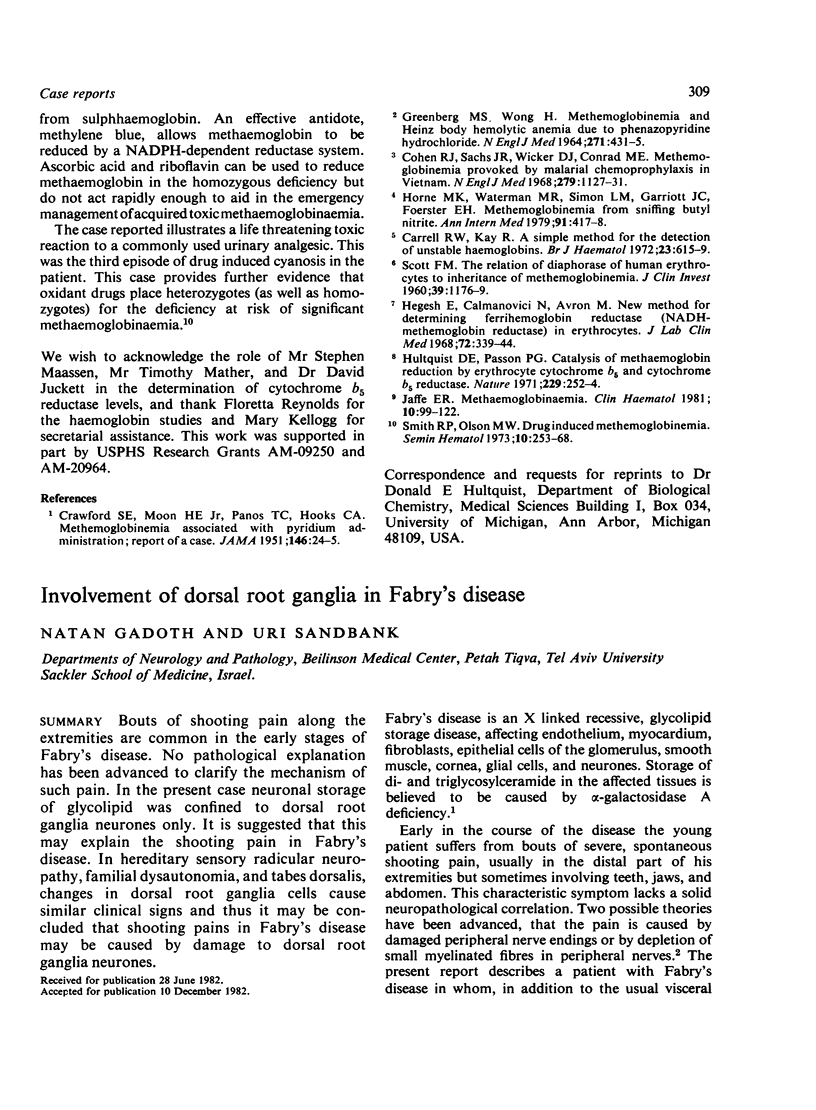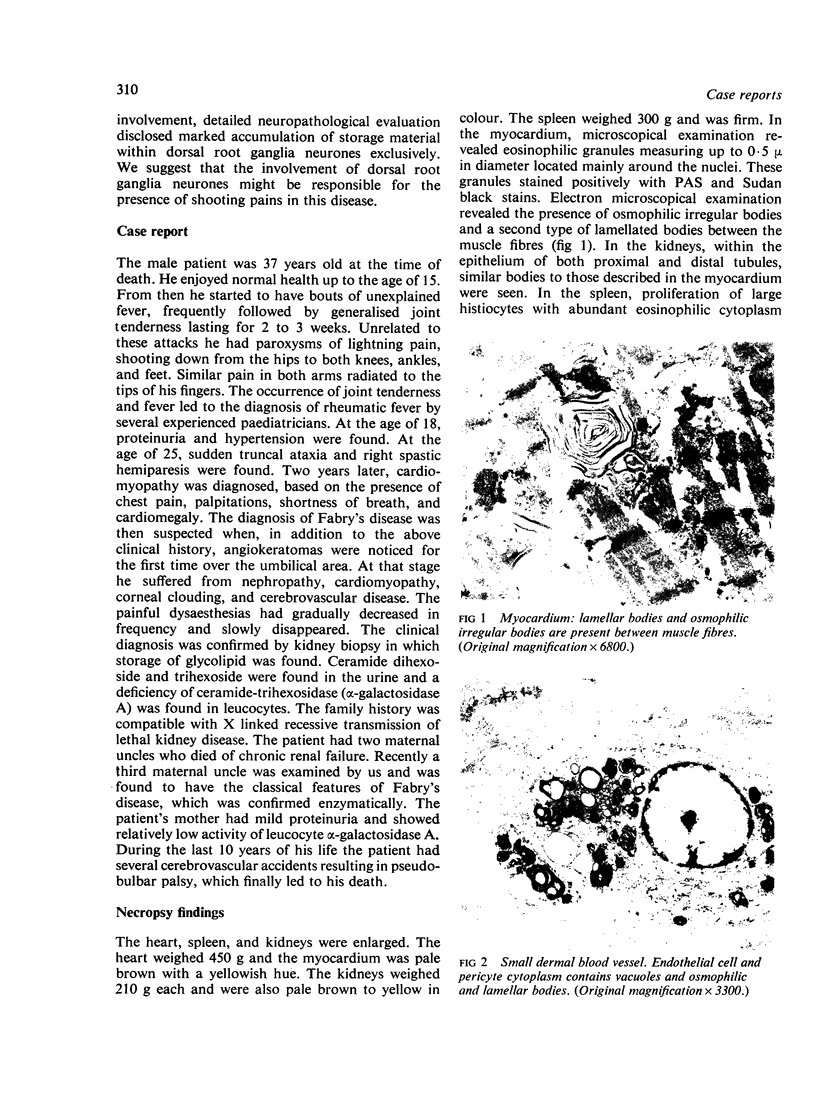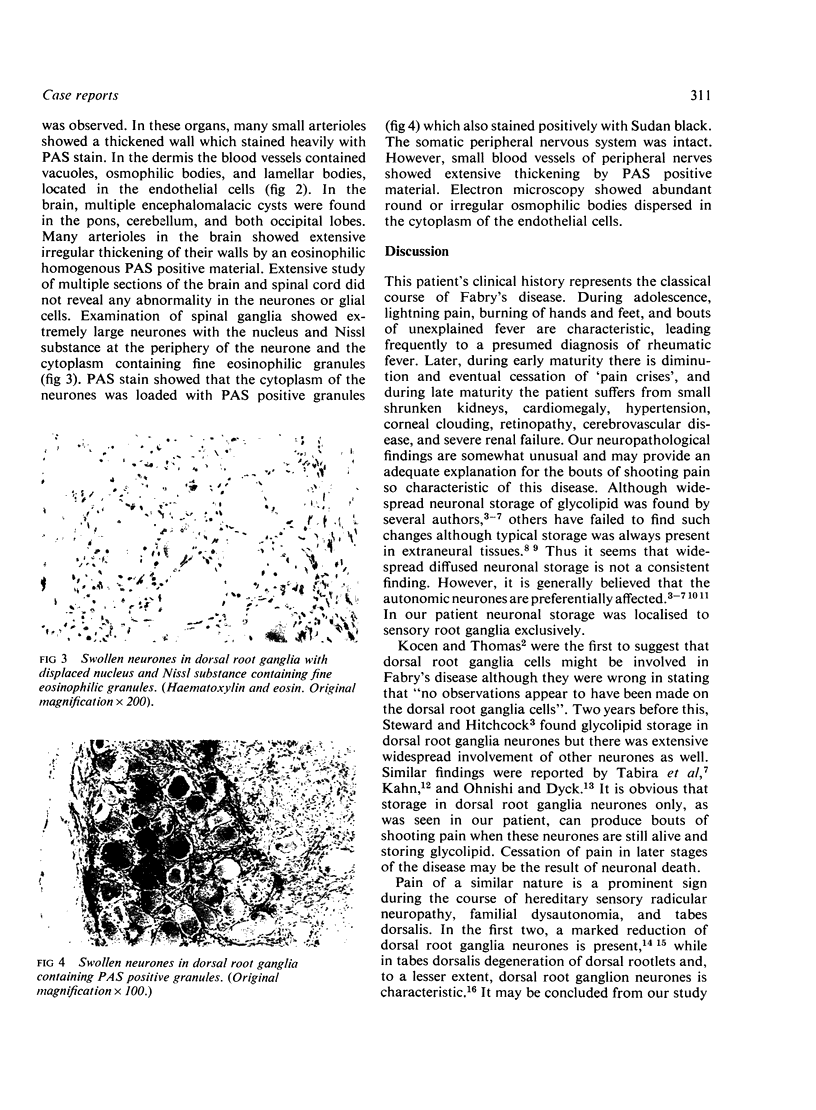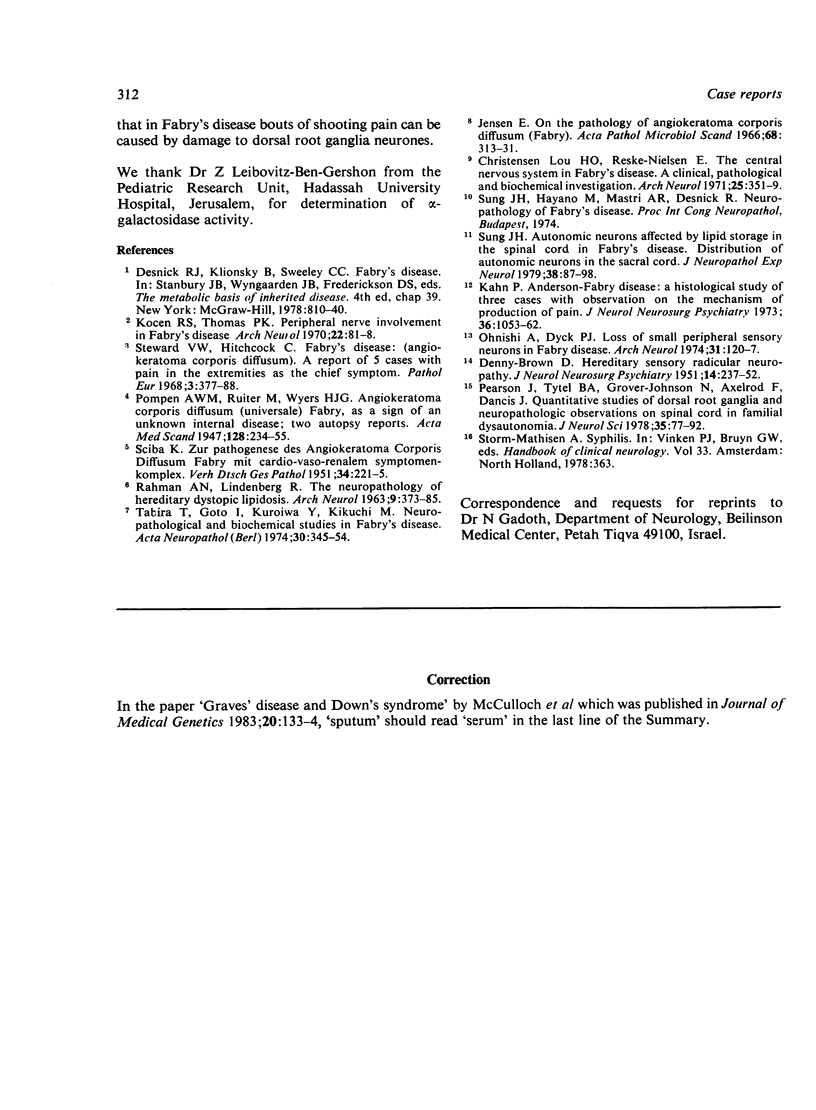Abstract
Bouts of shooting pain along the extremities are common in the early stages of Fabry's disease. No pathological explanation has been advanced to clarify the mechanism of such pain. In the present case neuronal storage of glycolipid was confined to dorsal root ganglia neurones only. It is suggested that this may explain the shooting pain in Fabry's disease. In hereditary sensory radicular neuropathy, familial dysautonomia, and tabes dorsalis, changes in dorsal root ganglia cells cause similar clinical signs and thus it may be concluded that shooting pains in Fabry's disease may be caused by damage to dorsal root ganglia neurones.
Full text
PDF



Images in this article
Selected References
These references are in PubMed. This may not be the complete list of references from this article.
- DENNY-BROWN D. Hereditary sensory radicular neuropathy. J Neurol Neurosurg Psychiatry. 1951 Nov;14(4):237–252. doi: 10.1136/jnnp.14.4.237. [DOI] [PMC free article] [PubMed] [Google Scholar]
- Jensen E. On the pathology of angiokeratoma corporis diffusum (Fabry). Acta Pathol Microbiol Scand. 1966;68(3):313–331. doi: 10.1111/apm.1966.68.3.313. [DOI] [PubMed] [Google Scholar]
- Kahn P. Anderson-Fabry disease: a histopathological study of three cases with observations on the mechanism of production of pain. J Neurol Neurosurg Psychiatry. 1973 Dec;36(6):1053–1062. doi: 10.1136/jnnp.36.6.1053. [DOI] [PMC free article] [PubMed] [Google Scholar]
- Lou H. O., Reske-Nielsen E. the central nervous system in Fabry's disease. A clinical, pathological, and biochemical investigation. Arch Neurol. 1971 Oct;25(4):351–359. doi: 10.1001/archneur.1971.00490040077009. [DOI] [PubMed] [Google Scholar]
- Onishi A., Dyck P. J. Loss of small peripheral sensory neurons in Fabry disease. Histologic and morphometric evaluation of cutaneous nerves, spinal ganglia, and posterior columns. Arch Neurol. 1974 Aug;31(2):120–127. doi: 10.1001/archneur.1974.00490380068009. [DOI] [PubMed] [Google Scholar]
- Pearson J., Pytel B. A., Grover-Johnson N., Axelrod F., Dancis J. Quantitative studies of dorsal root ganglia and neuropathologic observations on spinal cords in familial dysautonomia. J Neurol Sci. 1978 Jan;35(1):77–92. doi: 10.1016/0022-510x(78)90103-x. [DOI] [PubMed] [Google Scholar]
- RAHMAN A. N., LINDENBERG R. THE NEUROPATHOLOGY OF HEREDITARY DYSTOPIC LIPIDOSIS. Arch Neurol. 1963 Oct;9:373–385. doi: 10.1001/archneur.1963.00460100061007. [DOI] [PubMed] [Google Scholar]
- Steward V. W., Hitchcock C. Fabry's disease (angiokeratoma corporis diffusum). A report of 5 cases with pain in the extremities as the chief symptom. Pathol Eur. 1968;3(2):377–388. [PubMed] [Google Scholar]
- Sung J. H. Autonomic neurons affected by lipid storage in the spinal cord in Fabry's disease: distribution of autonomic neurons in the sacral cord. J Neuropathol Exp Neurol. 1979 Mar;38(2):87–98. doi: 10.1097/00005072-197903000-00001. [DOI] [PubMed] [Google Scholar]
- Tabira T., Goto I., Kuroiwa Y., Kikuchi M. Neuropathological and biochemical studies in Fabry's disease. Acta Neuropathol. 1974;30(4):345–354. doi: 10.1007/BF00697017. [DOI] [PubMed] [Google Scholar]






